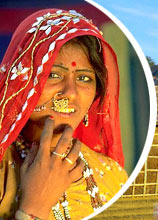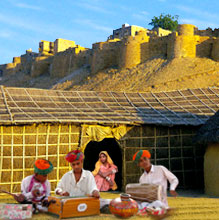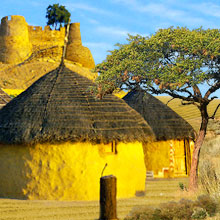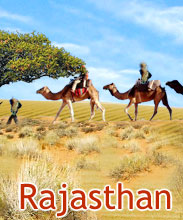 The
city of Chittorgarh lies 115 km to the east of Udaipur. It is spread
over an area of 700 acres. Crowning a 7-mile long hill, Chittorgarh is
home to numerous palaces, towers, temples, etc. The history of
Chittorgarh is very rich, full seizures and acquisitions. Bappa Rawal,
the founder of the Sisodia dynasty, married princess Solanki. The
kingdom of Chittorgarh was first given as a dowry gift to him in the mid
8th century. Read on this Chittorgarh city guide to explore the city
further:
The
city of Chittorgarh lies 115 km to the east of Udaipur. It is spread
over an area of 700 acres. Crowning a 7-mile long hill, Chittorgarh is
home to numerous palaces, towers, temples, etc. The history of
Chittorgarh is very rich, full seizures and acquisitions. Bappa Rawal,
the founder of the Sisodia dynasty, married princess Solanki. The
kingdom of Chittorgarh was first given as a dowry gift to him in the mid
8th century. Read on this Chittorgarh city guide to explore the city
further:Throughout the period of 8th century to the 16th century, the descendents Bappa Rawal reigned over Mewar, stretching from Gujarat to Ajmer. And during these times only, Chittorgarh was besieged three times. The first time Chittorgarh besieged was in the year 1303. Pathan King Ala-ud-din Khilji got awed by the beauty of Queen Padmini and attacked the Chittorgarh fort to capture her. The year 1535 saw the Bahadur Shah, the Sultan of Gujarat, raiding the fort and sentencing many men to death. It was during this time that womenfolk of Chittorgarh, led by Rani Karnawati, committed Jauhar (self immolation). After a few years, in 1568, Mughal Emperor Akbar wrecked the fort and brought it to ruins.
Presently, the Chittorgarh of Rajasthan, India extends below the hill on the west side. An embodiment of Rajput pride, romance and spirit, Chittorgarh abounds with tales of heroism and sacrifice. The main attraction behind Chittorgarh travel & tourism is its colossal fort, built on top of a hill. The fort is a reflection of the Rajput culture and tradition. Apart from that, there are a number of towers, palaces, museums and temples worth visiting in the city.











